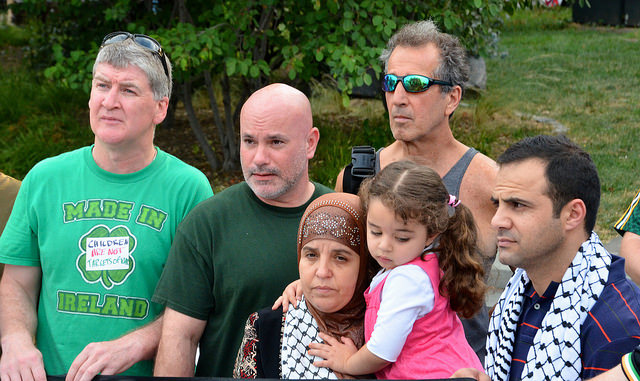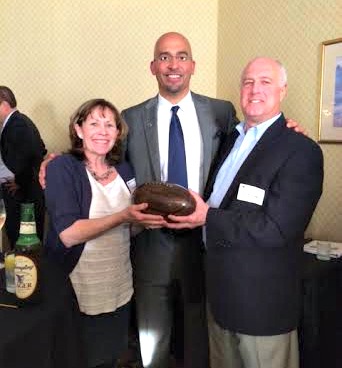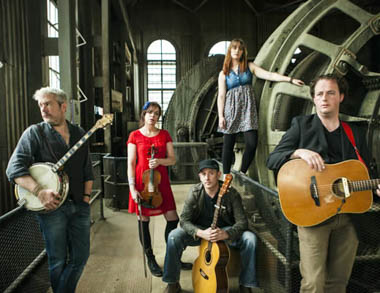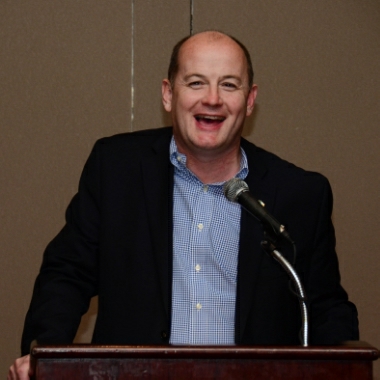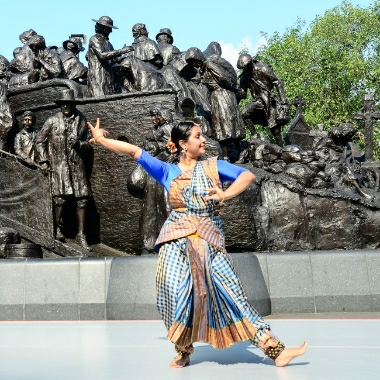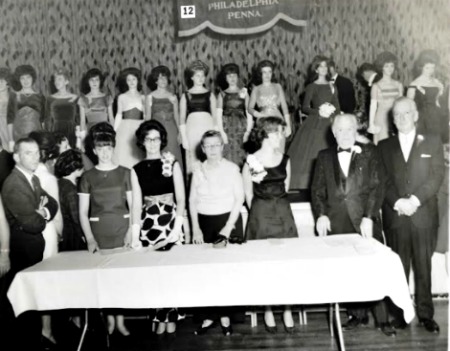Israel’s bombardment of Gaza has brought demonstrators out around the world—including Ireland. In 16 locations throughout the island nation last Saturday, thousands took to the streets in angry protest, calling for an end to the bloody violence that has Palestinian civilians caught in the crossfire between Israel and Hamas.
The day after that, on a warm July afternoon in Philadelphia, a little over 20 local Irish and Irish-Americans, joined by about 10 Palestinian-Americans, carried their own protest to the Irish Memorial on Penn’s Landing.
They draped black and white Palestinian keffiyehs (traditional scarves) around the necks of the iconic figures of Irish immigrants descending from the boats that brought them to America. A few others tried to hang the Palestinian flag, but couldn’t find a spot that would hold it.
One of the organizers, Kevin Ward, wearing a green T-shirt emblazoned with a shamrock and the words “Made in Ireland” across the front, wanted to be sure potential critics knew what drew him to be there.
“The Irish are doing this because we can understand the struggle the Palestinians are going through. We’ve been oppressed ourselves by the British Empire. We can relate to where these people are coming from. We all know this is an uneven fight. This is not a war. They’ve already demolished 55 percent of Palestine in this attack right now—what’s left of it.”
As for the location—the Memorial—Ward thought it entirely appropriate, given that it stands in remembrance of the suffering the Irish endured under British oppression.
Organizer Aine Fox said the protest came together almost spontaneously. “We all just happened to cross paths at an Irish Center fundraiser. I was happy to see people who understand the context better than most Americans do. Just from a human perspective … this is just a small act of solidarity.”
For tourists and local dog-walkers passing by, the scene might have seemed like an unusual slice of American life. There were accents from the West Bank and Donegal; green Phillies caps and traditional hijabs (head scarves); Palestinian flags and the banner of the Kevin Barry Gaelic Football Club.
It was a kind of United Nations moment, Irish and Palestinians lined up in front of the memorial, holding hand-lettered cardboard protest signs—“Israel is a terrorist with a billion$ budget,” “End the Occupation Now,” and “Saor Gaza Anois” (“Free Gaza Now,” in the Irish language)—all chanting “Brick by brick, wall by wall, the Israeli apartheid has to fall.”
Some of the Palestinian protesters said they really weren’t surprised at Irish interest in their cause, given Ireland’s history with Britain.
“Palestinians are searching for the same thing,” said Jihad Abdeljaber, born in the United States of Palestinian parents. “This brings us together as one people for justice. We appreciate Ireland’s support, and the support of people around the world. It’s a crisis of humanity.”
The protest didn’t last long, but those who were there felt they’d made their point, and they hoped people would listen. For Brian McGarrity, Hamas doesn’t enter into the equation. It’s the suffering of the people. “The amount of casualties … its been more of a massacre than a war.”
Ward, standing nearby, concurred, saying Hamas is a terrorist organization. But at the same time, he suggested Israel’s response to Hamas missile attacks was disproportionate. “Let’s say England said tomorrow, we’re going to go get the IRA. So in order for us to destroy the IRA, we’re going to level the whole island. Let’s be sure we get them all.”
Fox, for her part, just wanted people to understand that the protest is about drawing attention to oppression by a foreign power. “I grew up in West Belfast,” she said, “and I understand that perfectly.”

